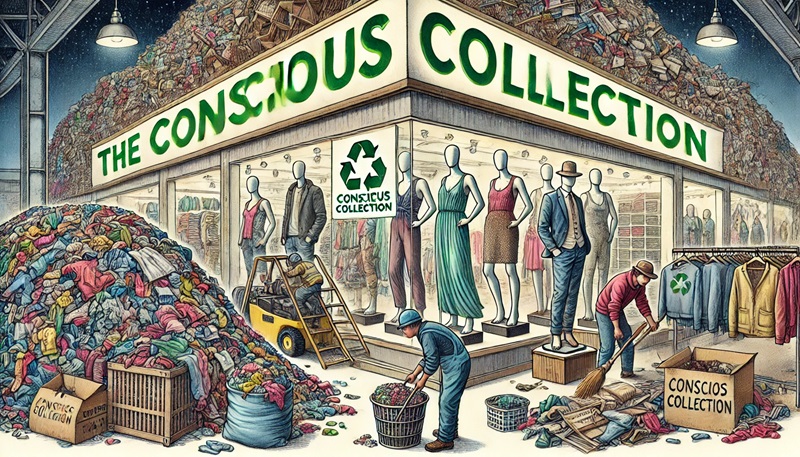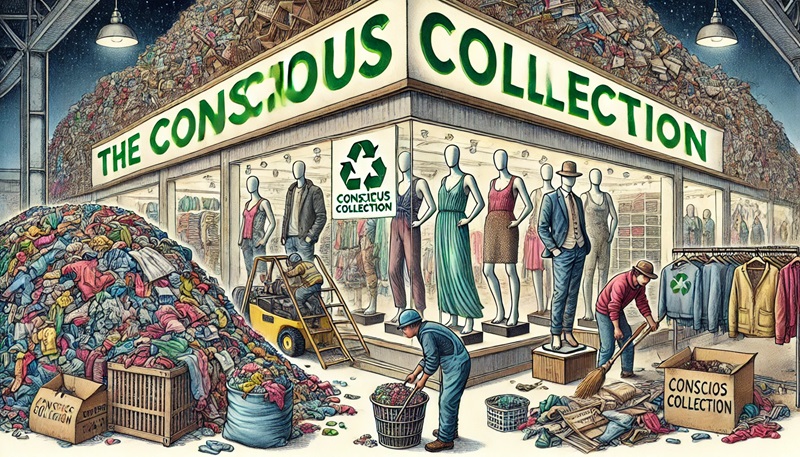What is Greenwashing?
Many companies use words like “eco-friendly” or “natural” to make customers think their product is green, even if it’s not.
You may have heard of greenwashing. Here’s what it means.
What is Greenwashing

Greenwashing occurs when companies say they are helping the environment but are doing little to make a difference.
Many companies use words like “eco-friendly” or “natural” to make customers think their product is green, even if it’s not. They do this because people want to support businesses that are good for the planet, so greenwashing makes their products sound better.
How to Recognize Greenwashing
Some companies might:
Use “green” words without explaining how they’re helping the planet.
Show small eco-friendly actions to hide the bigger harmful ones.
Avoid giving any real proof of their green claims.
Let’s look at a few examples to see how companies try to greenwash.
Real Examples of Greenwashing
Fast Fashion Brands

Clothing brands like H&M and Zara have made “green” collections called “Conscious” or “Sustainable” lines. This sounds nice, but most of their clothes are still made in ways that hurt the planet.
Fast fashion produces massive waste because new trends are created weekly, and clothes are thrown away quickly. In 2021, H&M was warned in Norway for making “misleading” claims about its sustainable line because it didn’t have enough evidence to back them up.
Did you know: The fashion industry is the second-biggest consumer of water. It is also very bad for the air and causes about 10% of global carbon emissions.
“Recyclable” Plastic Bottles

Many soft drink companies advertise that their plastic bottles are recyclable. While this is true, it is also true that billions of plastic bottles are still created every year, and only a small percentage are recycled.
For example – Coca-Cola was named the world’s largest plastic polluter by Break Free from Plastic in 2019, showing that advertising recyclable bottles doesn’t make up for all the plastic they put out.
Oil Companies and Renewable Energy Claims

Oil companies often discuss their small renewable energy projects. They run ads showing how they support wind or solar energy. However, most of their money still goes to oil and gas, which are big sources of pollution.
For example, BP rebranded itself as “Beyond Petroleum” in 2000 to look green, but most of its business is still in fossil fuels, which create greenhouse gases.
These were only a few examples of greenwashing. There are many, many more.
Why Greenwashing is a Problem

Greenwashing can trick people into thinking they’re helping the planet when they buy certain products. If a company spends more on advertising its “green” image than actually reducing its pollution, it stops people from supporting businesses that are truly eco-friendly.
How to Avoid Being Fooled by Greenwashing
Look for Proof: Real green companies like Fair Trade or Rainforest Alliance often have official certifications.
Do a Little Research: Websites like Good On You and Ethical Consumer rate brands on how green they really are.
Choose Lasting Products: Look for things that can be reused, like metal water bottles or cloth bags, instead of items that get thrown away quickly.
Make Smart Choices
Knowing about greenwashing helps you make choices that are better for the environment. By picking truly green products, you show companies that you care about real change, not just fancy labels.
Can you think of any more examples? Tell us. Write to us at: administrator@ikidyounot.in

Better Your Child’s G.K. In 3 Minutes – Get This Free Newsletter
Get fun facts, simple and easy news, quizzes, and lots of other interesting things to read in your mailbox – for free! It’s what we call GK-on-the-go!
I Kid You Not now has a large readership across India and also parts of the world. If you want to write for us, you can submit your story here. You can also apply to become a news anchor. Apply here



Comments